The introduction of drones in agriculture has revolutionized the way farmers monitor and manage their crops. These aerial devices allow for precise data collection, resource optimization, and improved productivity. Below, we will explore the different types of drones used in agriculture, their characteristics, and applications, providing a comprehensive guide to understanding how each one can benefit agricultural operations.
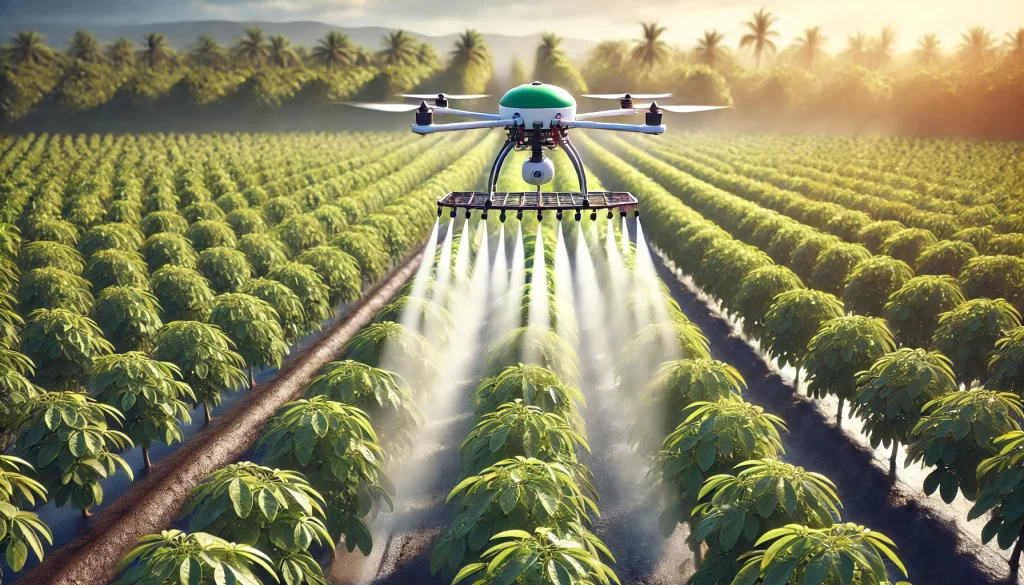
Why Use Drones in Agriculture?
Precision agriculture relies on gathering detailed data about crops to make informed decisions. Drones provide an aerial perspective that makes it easier to monitor plantations, detect early problems, and efficiently manage resources such as water, fertilizers, and pesticides. Additionally, their use reduces work time and minimizes manual intervention, resulting in cost savings and increased efficiency.
Types of Drones Used in Agriculture
1. Multirotor Drones
Description:
Multirotor drones, such as quadcopters, hexacopters, and octocopters, are popular for their maneuverability and ease of use. They can take off and land vertically, making them ideal for small and medium-sized areas.
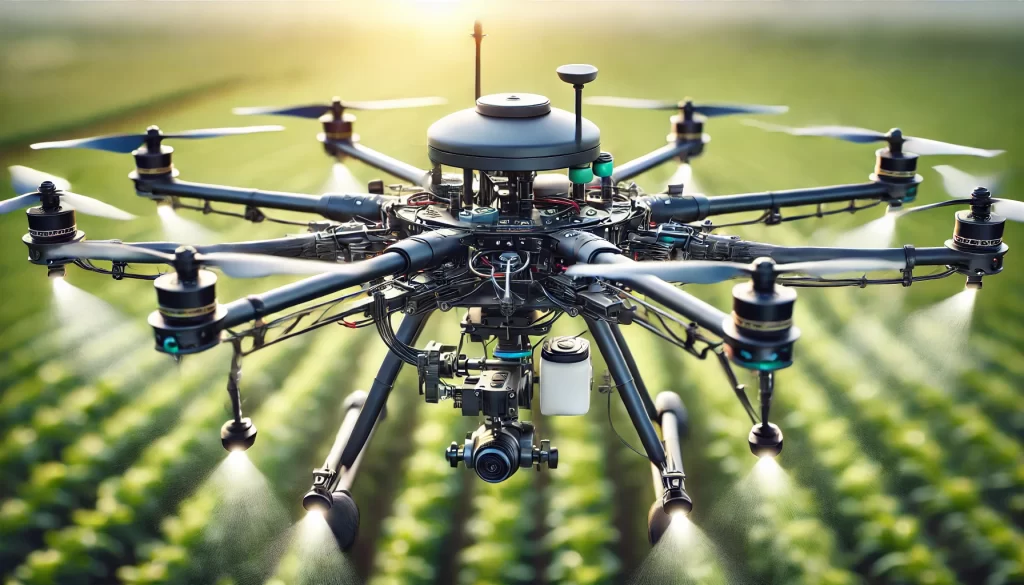
Applications in Agriculture:
- High-resolution crop monitoring.
- Localized spraying of pesticides and fertilizers.
- Soil condition inspection and disease detection.
Advantages:
- High stability and precision.
- Ability to carry sensor equipment and high-resolution cameras.
- Relatively affordable and easy to operate.
2. Fixed-Wing Drones
Description:
Fixed-wing drones have an airplane-like structure and are characterized by greater autonomy and speed. They require a larger area for takeoff and landing.
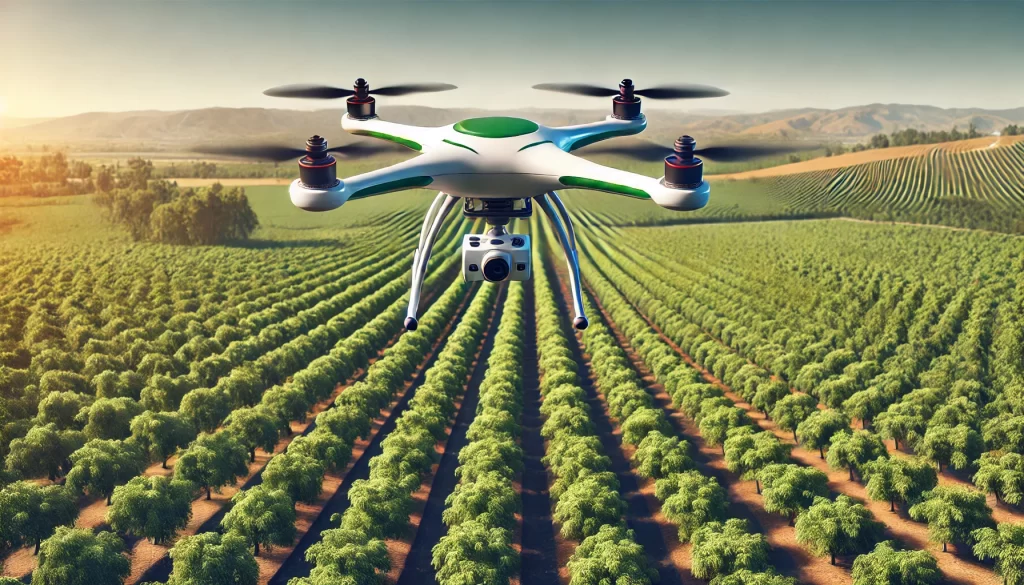
Applications in Agriculture:
- Covers large areas in a short amount of time.
- Generates topographic maps and geospatial analysis.
- Monitors crops in vast areas.
Advantages:
- Longer flight time and efficiency in large surfaces.
- Reduced energy consumption during long flights.
- Ideal for topographic surveys and orthophoto generation.
3. Sample Collection Drones
Description:
These drones are equipped with robotic arms or containers that allow them to collect soil, water, or plant tissue samples without direct human intervention.
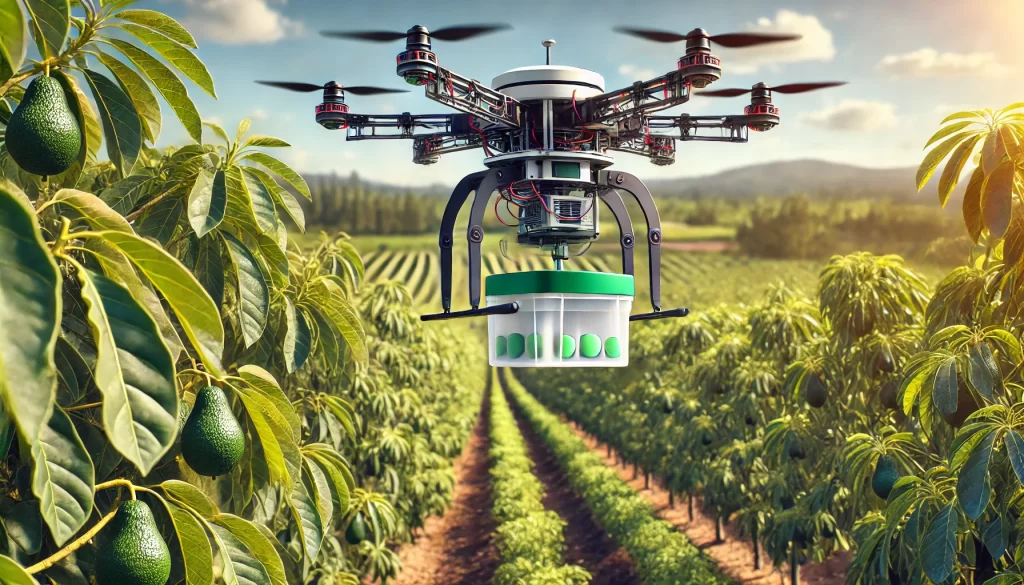
Applications in Agriculture:
- Collection of samples for laboratory analysis.
- Evaluation of soil quality and nutrient content.
- Monitoring of environmental pollution in agricultural areas.
Advantages:
- Reduces human exposure to hard-to-reach or contaminated areas.
- High precision in data collection for detailed analysis.
- Complementary to other aerial monitoring techniques with direct field data.
4. Hybrid Drones
Description:
Hybrid drones combine features of both multirotor and fixed-wing drones, offering versatility and efficiency. They can take off vertically and then transition to fixed-wing flight for longer distances.
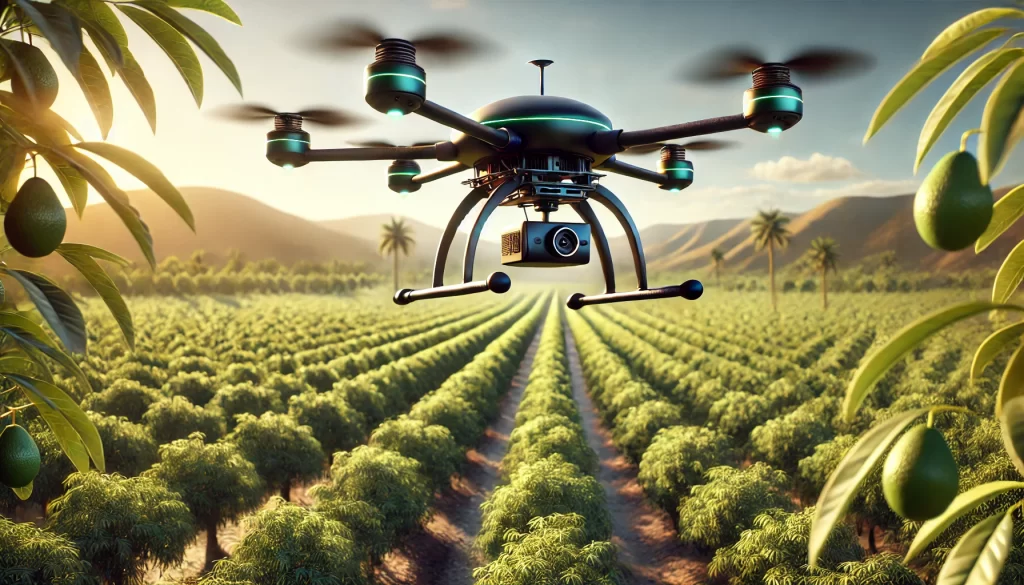
Applications in Agriculture:
- Flexible monitoring requiring fast mobility and extensive coverage.
- Mixed applications of visual monitoring and data collection.
- Initial exploration of large areas followed by detailed operations in specific zones.
Advantages:
- Versatility in different stages of the agricultural cycle.
- Cost reduction by combining multiple functionalities into one device.
- Efficiency in transitioning between stationary and long-range flights.
Comparative Features
Below is a comparative table summarizing some of the key features of the different types of drones:
| Drone Type | Autonomy | Manoeuvrability | Payload | Main Applications |
|---|---|---|---|---|
| Multirotor | Medium | High | Moderate | Detailed monitoring, spraying |
| Fixed-Wing | High | Medium | High | Large area mapping, topography |
| Sample Collection | Variable | Variable | Low | Sample collection |
| Hybrid | High | High | Moderate | Versatility, mixed monitoring |
Source: Adaptation of agricultural technology reports (2023).
Benefits of Using Drones in Agriculture
- Time and Resource Efficiency: Drones allow for large areas to be covered in a short amount of time, reducing the need for labor-intensive work and optimizing the use of inputs such as fertilizers and water.
- Real-Time Data: The ability to collect and analyze data immediately facilitates decision-making and allows for a rapid response to problems such as diseases or nutritional deficiencies.
- Improvement in Decision-Making: Data collected by drones is integrated into precision agriculture systems, contributing to the creation of variability maps, crop planning, and differentiated management strategies.
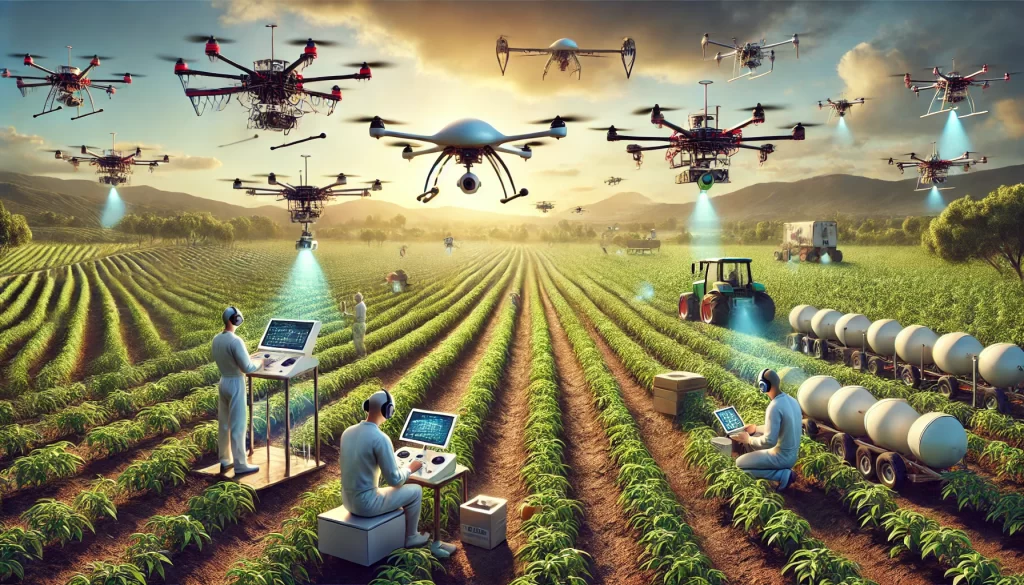
The use of drones in agriculture represents a true revolution in the way crops are managed. From multirotors for detailed monitoring to fixed-wing drones for large areas, each type offers specific advantages that adapt to different needs and production scales. Adopting this technology not only optimizes processes but also contributes to more sustainable and profitable agriculture.
By exploring the available options and choosing the right drone for each task, farmers can significantly improve crop management and respond more effectively to the challenges of the agricultural sector. Investing in drone technology is a safe bet for the future of precision agriculture and the efficient management of natural resources.
 AgronoBlog – Agriculture Blog
AgronoBlog – Agriculture Blog